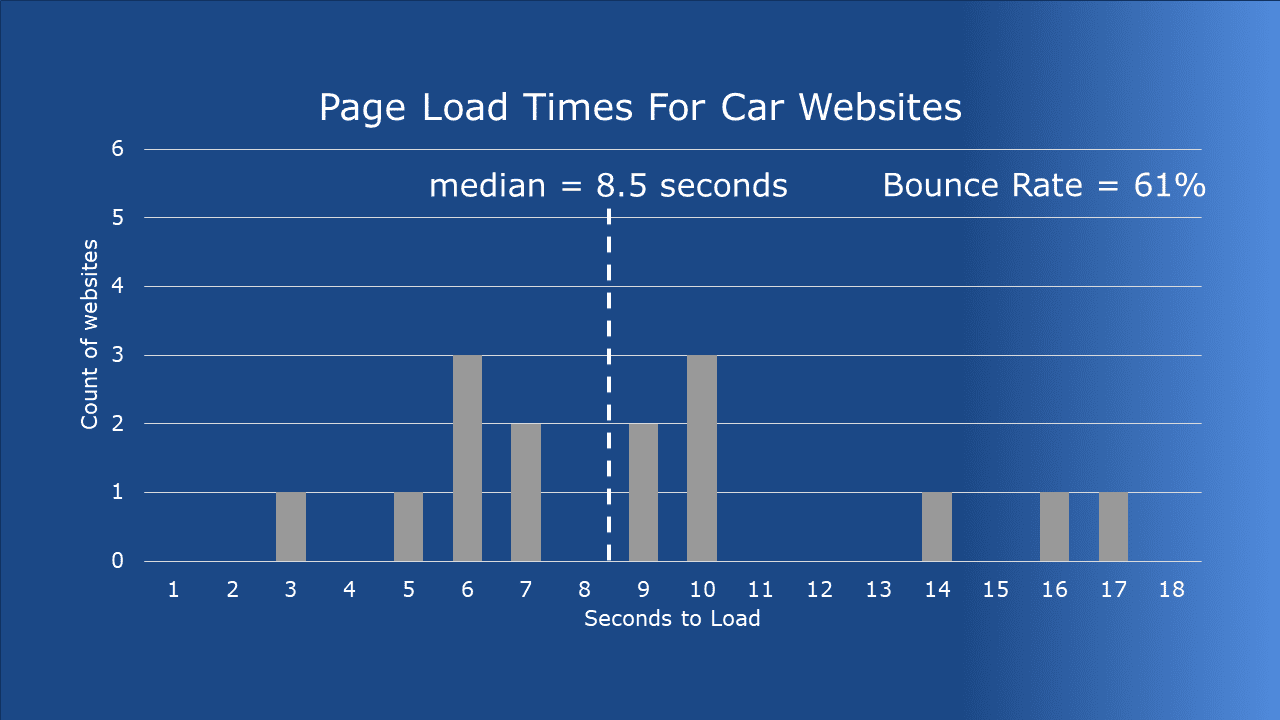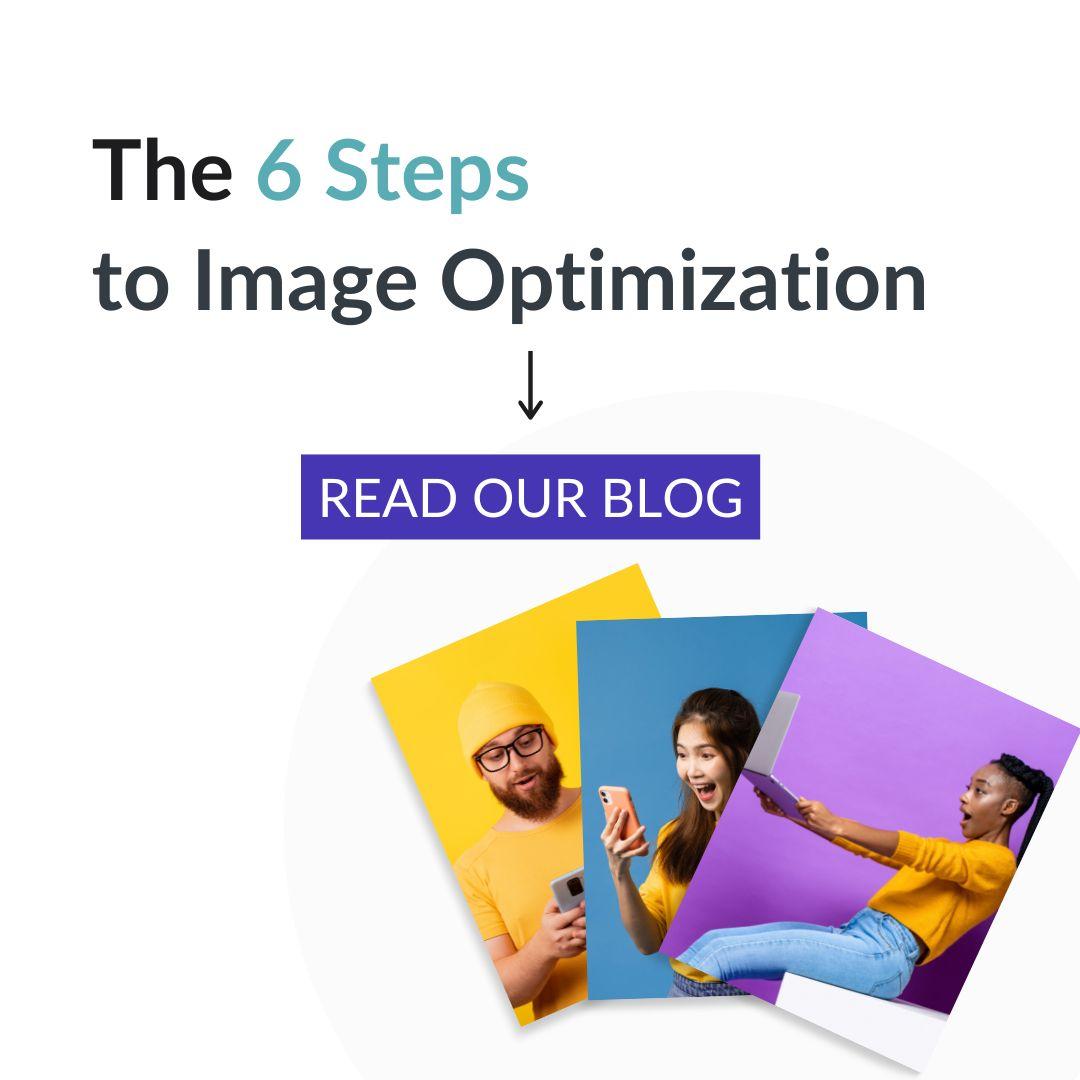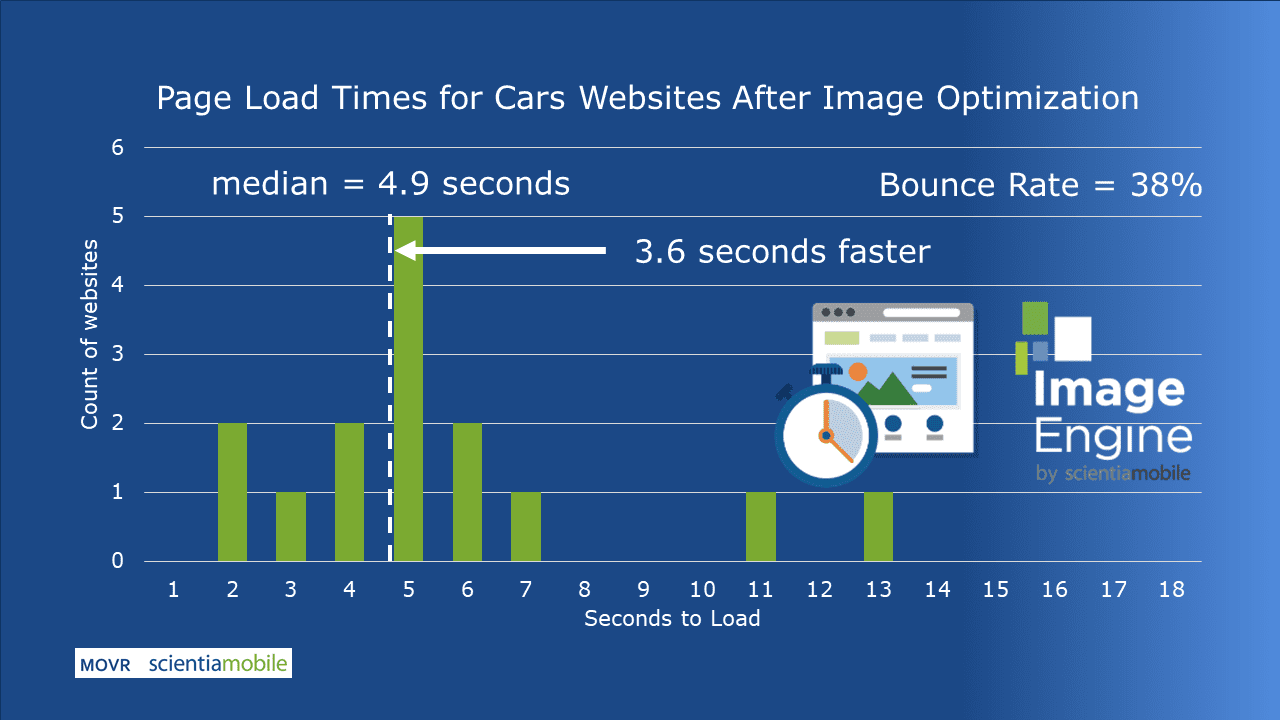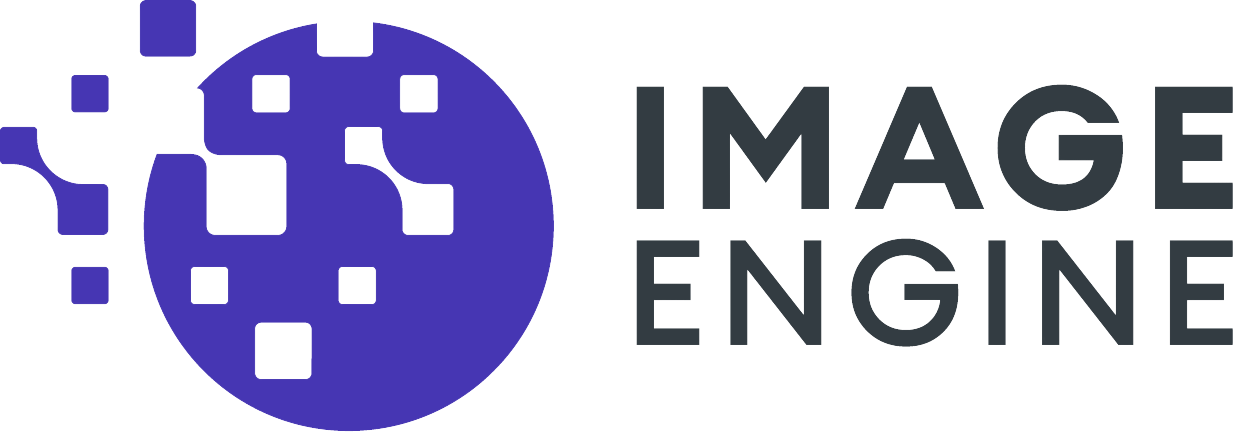Our ScientiaMobile team surveyed the page-load times of 15 top car websites. The median page-load time was 8.5 seconds. This 8.5 seconds is longer than user expectations of 3-5 seconds, which results in high abandon rates and fewer online sales.

This is a critical problem for online auto sales. In 2018, the U.S. market for online car sales was estimated at $30 billion by IBIS. The market has grown 4% in the last 5 years. To accelerate the growth of online sales, it’s critical to improve the user experience of these online car buying websites.
Images are critical for car websites, particularly for used cars where buyers are inspecting the condition of the car. In addition, car websites are a critical part of the new car shopping process. 29% of buyers use smartphones to compare prices, research car models, and find dealership locations.

Struggling to get your SEO just right? Start with your image optimization, and start with our blog!
How Image Optimization Accelerates Car Websites
Oversized image payload is a major cause of slow-loading web pages. Images of cars are frequently larger than they need to be, particularly for mobile devices.

We applied image optimization to the 15 car websites and evaluated the impact on page-load time. Image optimization cuts out 68% of image payload on car buying sites. Image optimization accelerates the median page-load time from 8.5 to 4.9 seconds, a 3.6 second improvement.
According to a Pingdom study, this would reduce the bounce rate from 61% to 38%. Improved page-loading also has beneficial impacts on search engine optimization and sales conversion rates.
